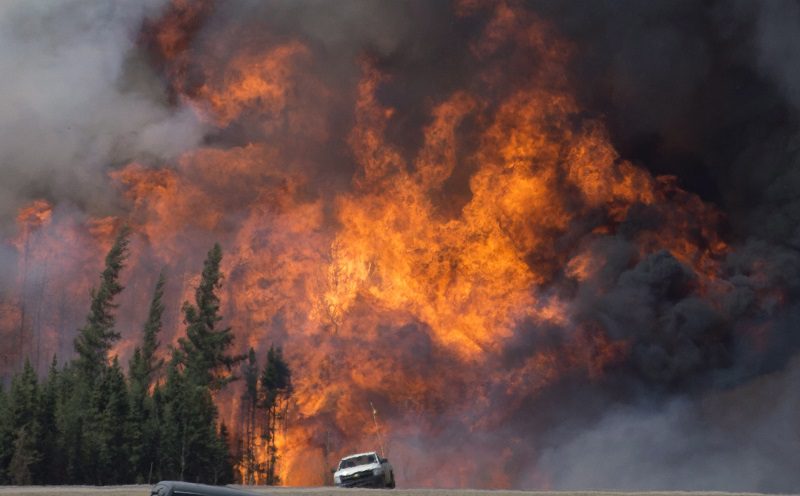Why insurers should invest in genetically modified trees

Insurance companies should consider investing in genetically-modified, slow-burning trees to mitigate wildfire damage, according to a first-prize pitch at the WinterHack 2022: Design Thinking Ideathon.
“We will be taking advantage of state-of-the-art biotechnology and building upon it to create a firewall in and around forests,” said Mateen Hosseiny, who presented the idea on behalf of a team of eight students from Humber College’s insurance program.
“We’ll be using genetically modified trees to slow down the growth of wildfires, decrease the intensity and give the firefighting team more time to contain and extinguish the flames.”
Cookhouse Labs, Canada’s first insurtech innovation lab, hosted the first-ever national “design thinking ideathon” Friday in partnership with the Insurance Institute of Canada and Humber College. The hybrid event was held both virtually and in-person by Cookhouse Labs in Toronto.
WinterHack 2022 featured nine teams representing insurance education programs across the country. Teams from Conestoga College, Humber College, Mohawk College, Saskatchewan Polytechnic College, Centennial College, the University of Calgary, University of Toronto, and the B.C. Institute of Technology all participated in the final pitches to the judges.
Students were given two days to come up with a minimum viable product and pitch the idea to a panel of three judges. That panel included Joseph Carnevale, president of the Insurance Brokers Association of Ontario, Veronique Laroch of Foresters Financial, and Marcia Mowatt, assistant vice president of insurance at TD.
Humber’s winning pitch noted the devastation caused by the 2016 wildfire in Fort McMurray, Alta., which burned a total area of 1.5 million acres, destroyed 3,200 buildings and racked up nearly $10 billion in total damage. Canadian property and casualty insurers paid out about $3.7 billion in claims.
Since Fort Mac, government investment in fire suppression has increased from $800 million to $1.5 billion, Humber’s video pitch observed. Even so, over the past 25 years, there have been more than 7,000 wildfires every year. To prevent further wildfire damage, insurers should consider investing in slower-burning trees, the students urged.
“We aim to modify characteristics of certain strains of poplar, pine and spruce trees that make up the majority of Canadian forests,” Humber’s pitch stated. The modifications would change the trees’ thickness and density, heighten their moisture content and water retention capabilities, as well as increase their growth rate.
“These trees will simply burn slower,” Hosseiny said in Humber’s video pitch. “We are planning on partnering with scientific institutions and local authorities to research and develop these trees. We will carry out extensive testing including controlled burn tests in realistic environments, as well as monitoring their impact on the local ecosystem. This activity will ensure our project can sustain the intense heat and flames caused by an existing fire….
“As a direct result, our project will allow for appropriate response and action plans from firefighting teams, save numerous human lives, protect and prevent local wildlife from displacement and extinction, and prevent billions of dollars in property loss insurance claims and government aid.”
Humber’s pitch received the $750 prize for first place. Team members included Hosseiny, Michael Running, Harsh Gotmani, Sneha Jasapara, Labdhi Shah, Ajinkya Ghorpade, Kelly McWhinnie, and Ayush Singaltook.
Saskatchewan Polytechnic’s 10-person team claimed the $500 prize for runners-up. Team members included Francis Bazin, Keith Hubbard, Navpreet Singh, Savannah Spooner, Samarah Genaille, Nirav Patel, Nirav Soni, Ikenna Nwoke, Rebecca Hirschmueller and Christian Gotteslig.
Saskatchewan’s pitch was for a home insurance app that gave users access to a “Home Enhancement Finance Program,” which loaned money to homeowners for projects that made their homes more resilient to damage wrought by climate risk.
Teams had to choose one of four challenges:
Come up with an all-in-one insurance platform that would integrate many insurance products into one ecosphere;
Present a solution to prevent or reduce risk associated with wildfires
Build a subscription-based digital offering
Develop a way to attract top talent into the insurance industry.
Judges assessed the presentations based on the level of innovation (20%); business value, including reputational value or its impact on a company’s profitability or combined ratio (30%); methodology (10%); the ‘coolness’ factor (20%); and feasibility (20%).



